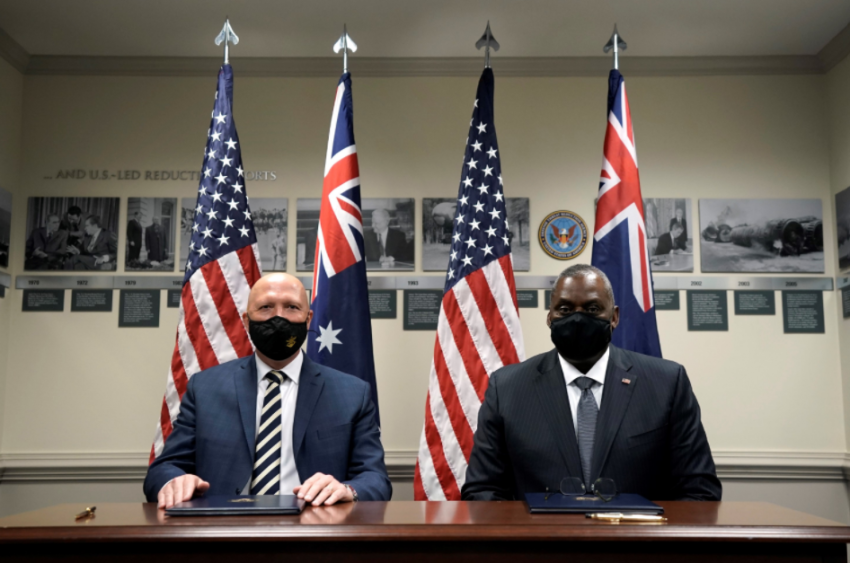
Few areas of public expenditure are more costly and mindlessly wasteful than submarines. Australia’s effort is particularly impressive.
Pick a real winner by signing a contract for a yet-to-be-designed attack class submarine, supposedly “necessary” in an “increasingly dangerous” region. Ensure the submarine design is based on a nuclear model, but remove that attribute and charge at least twice as much for a less capable weapon. Make sure the order is for 12 of these yet-to-be-designed-and-built systems. And make sure that they are only ready sometime in the 2030s (by which time they risk being obsolete).
The dubious honour for this contract, initially costing $50 billion, went to the French submarine company DCNS (now called Naval Group), which nudged out German and Japanese contenders with pre-existing designs.
An Australian government announcement in April 2016 explained the decision was driven by DCNS’ “superior sensor performance and stealth characteristics, as well as range and endurance similar to the Collins class submarine”. Other considerations were cost, schedule, program execution, through-life support and “Australian industry involvement”.
The French military establishment praised it as the “contract of the century”. Le Parisien’s editorial lauded the prospect of thousands of jobs. French Defence Minister Jean-Yves Le Drian proclaimed a “50-year marriage” had begun.
The post-nuptials were not promising. Rear Admiral Greg Sammut had to concede in a Senate estimates hearing in 2018 that another $50 billion would be required to sustain the submarines for their operating life.
Tiffs and disagreements over distribution of labour and further costs started to bite. How much of the work would actually be undertaken by labour based in Australia? Would the French company be keeping the lion’s share?
Amid these problems, another idea started to gain momentum among defence chiefs: a competing, cheaper design, based on a rejigged version of Australia’s existing Collins Class submarine, might be a suitable alternative.
In the meantime, perhaps a German alternative might also figure, namely the Type 214 diesel electric submarine developed by Howaldtswerker-Deutsche Werft GmbH (HDW).
In May, Naval Group’s Transfer of Technology program manager Fabrice Leduc told his staff the submarine project had been subjected to a “political timeline” following the change of defence minister. Peter Dutton was biding his time because “he wanted to have some strong warranties from the industry and especially Naval Group in terms of cost and schedule”. The marriage had truly soured.
On September 15, the Canberra press gallery was awash with rumours that a divorce was being proposed.
The following day, Prime Minister Scott Morrison announced a security ménage à trois with the United States and Britain, with Australia as the subordinate partner. The glue that will hold this union together is a common suspicion: China.
Replacing the Attack Class submarine will be a nuclear-powered alternative with Anglo-American blessing, based on the US Virginia class or British Astute class.
The joint statement announcing the creation of AUKUS said the three countries were “guided” by “enduring ideals and shared commitment to the international rules-based order”. They resolved “to deepen diplomatic, security, and defence cooperation in the Indo-Pacific region, including by working with partners, to meet the challenges of the twenty-first century.”
AUKUS, they said, would be a new “enhanced trilateral security partnership” to further such goals.
The agreement is nothing less than an announcement to the region that the Anglophone bloc intends to police, oversee and, if necessary, punish.
The three countries will “promote deeper information and technology sharing”. Security, science relating to defence, technology, industrial bases and supply chains will be further integrated. Deeper cooperation would take place “on a range of security and defence capabilities”.
The first initiative is a “shared” ambition “to support Australia in acquiring nuclear-powered submarines for the Royal Australian Navy”. US and British expertise will be drawn on to “bring an Australian capability into service at the earliest achievable date” from the submarine programs of both countries.
AUKUS unmistakably ties the countries into the same security orbit, meshing them to principles of “interoperability, commonality, and mutual benefit”.
Australia’s submarine policy has previously eschewed nuclear propulsion. Now, as a dowry for receiving such largesse, Canberra is offering up Australia as a confirmed US asset in policing the Indo-Pacific. US Navy commanders will be smacking their lips at maintaining attack vessels in Australia as part of the arrangement.
Indo-Pacific neighbours will be troubled, despite AUKUS assurances that the vessels will only have a conventional weapons’ capability.
The dissolution of the union with Naval Group will also be costly, with the defence company bound to push for a generous compensation package: $400 million is a suggested figure. To this can be added the $2 billion already spent.
As the divorce costs are sorted, Greens leader Adam Bandt is already warning that the decision promises to “put floating Chernobyls in the heart of Australia’s cities”. Protests from anti-nuclear activists and advocates are in the offing.
The enduring problem of Australia being able to build these submarines will have US lawmakers pushing for their construction on home soil, a situation that could mirror the Naval Group contract headaches. Australia also lacks a shipyard able to build or maintain such vessels.
In helping create AUKUS, Canberra has exchanged one white elephant of the sea for another. It has also significantly increased the prospects for a potential nuclear conflict in the Indo-Pacific region. The warmongers will be ecstatic.
[Dr Binoy Kampmark lectures at RMIT University, Melbourne. Email bkampmark@gmail.com.]